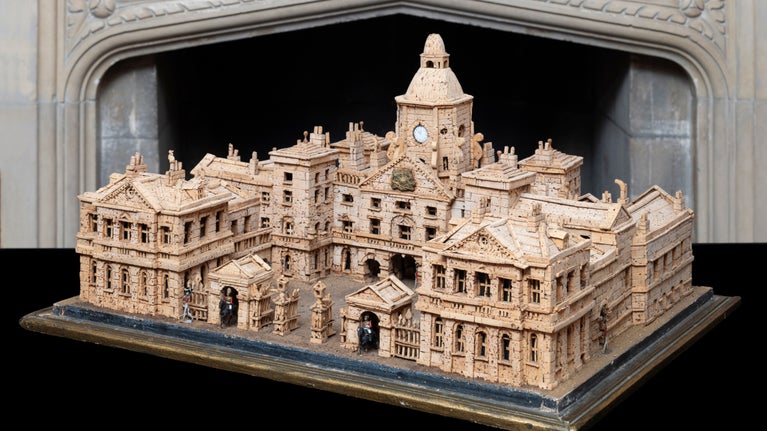
Art and collections
We care for one of the world's largest and most significant collections of art and heritage objects. Explore the highlights, our latest major exhibitions, curatorial research and more.

Gold is a colour of reverence, an object of luxury, a symbol of wealth and power. From goldwork and gilding to goldsmithing and jewellery making, take a look at the ways in which gold has been used in objects in the collections we care for.
Goldwork is the art of embroidery using precious metal threads. Discover examples of these golden threads in tapestries, silk dresses and extravagant outfits throughout the ages.
Gold was a symbol of devotion and heavenly riches during the Renaissance. See how gold leaf and ground gold was used at this time to elevate portraiture and illuminate manuscripts, and even to create sumptuous wallpaper.
Gilding in sculpture is achieved by applying a very thin coating of gold leaf to a solid substance. Discover gold gilded furniture, household items and grand sculptures designed to display wealth, status and achievement.
See precious items, with links to royalty, ancient civilisations and religion, including tsarist Russia and early Christianity.
Thanks to generous support, a beautiful 18th-century gilt console table in Beningborough's collection in North Yorkshire has been returned to its former shining glory.
It took 240 hours of skilled craftsmanship to conserve the structure of the table and the marble top. The final aspects of gilding the gold took place in the saloon for visitors to see.
This video tells a rare behind-the-scenes conservation story.

We care for one of the world's largest and most significant collections of art and heritage objects. Explore the highlights, our latest major exhibitions, curatorial research and more.
Discover the stories behind some of the greatest artworks and artefacts looked after by the National Trust, as told in a dedicated book, 125 Treasures from the Collections of the National Trust.

The 13,000 oil paintings in our care are nearly all displayed in the houses of their historic owners. Learn about the stories behind a selection of the artworks and their owners.

Masterpieces by Velázquez, Rembrandt, Hieronymus Bosch and El Greco can be seen in the collections at the properties in our care across the UK.

Lady Mary Curzon captivated the room in a custom-made peacock dress at the Delhi Durbar ball in 1903. Learn about our work caring for the dress to ensure it continues to demand the limelight.
